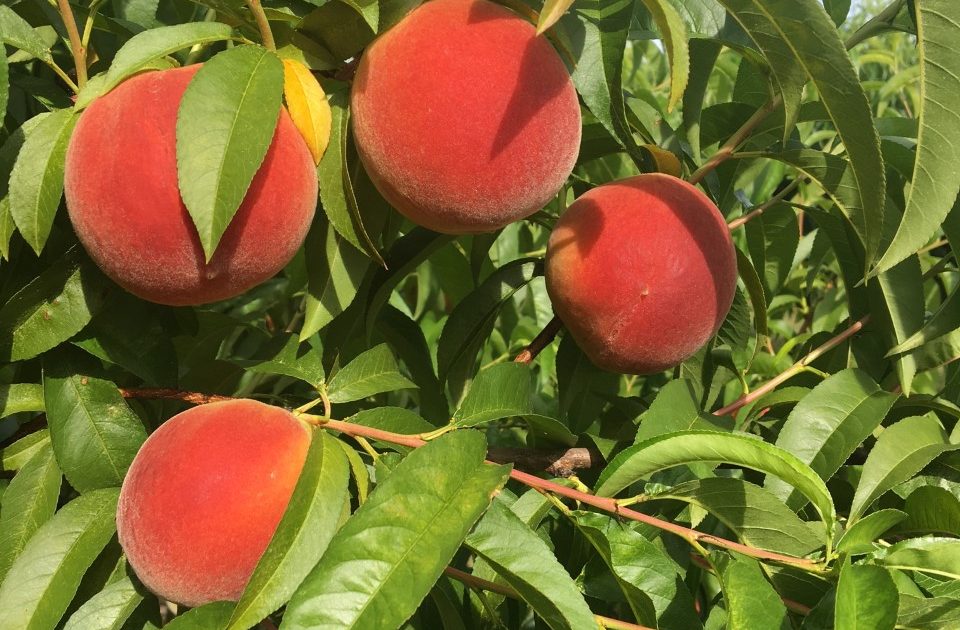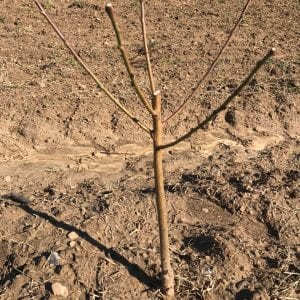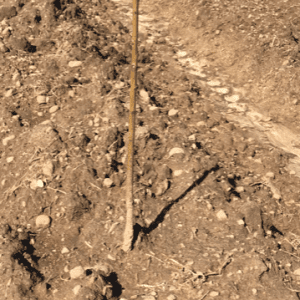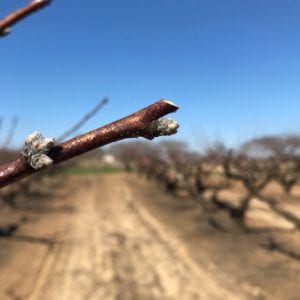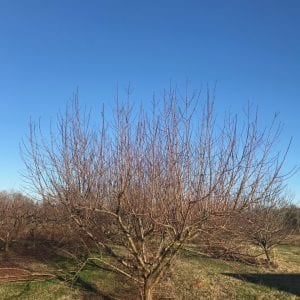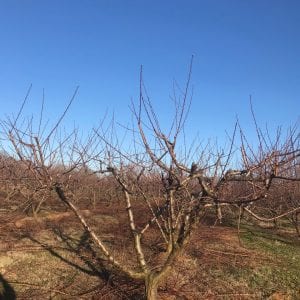Crop Production

Pruning peach trees is essential to maintaining healthy and productive trees. The effort and attention to detail given during this process will be rewarded in high quality fruit at harvest time, improved vigor and healthy, and long-living trees.
Pruning
The benefits of pruning peach trees include disease reduction, increased fruit quality, more efficient harvest, and reduction in thinning labor. During an average spring, most peach tree varieties will produce an excessive amount of fruit. The majority of these fruit must be removed to give the remaining fruit an opportunity to reach an acceptable size. This process is called thinning. Fruit thinning is a time-consuming process for most peach growers. Adequate pruning will result in less time spent thinning later in the spring.
When Should Peach Trees Be Pruned?
Peach trees should be pruned as late as possible but before blooming in the spring. Growers with only a few trees may be able to wait until the first of March to prune. However, growers with multiple acres of trees may have to begin pruning several weeks before bloom to ensure the job is completed on time. Pruning early in the winter is not encouraged. Pruning during that time could cause damage and create an environment conducive for diseases such as bacterial canker.
Delaying pruning is also beneficial in the instance of a late season freeze. Removing an excessive amount of wood in the fall or early winter can reduce the cold hardiness of the tree. Trees that are pruned early in the winter and exposed to multiple hard freezes are subject to severe injury. Also, removing an excessive amount of fruiting wood prior to a late freeze could result in a significant crop loss. Leaving all fruiting wood on the tree until after the last freeze will allow the grower to keep wood that was not injured by the freeze and was able to set fruit.
Types of Cuts
There are two types of cuts made when pruning peach trees; thinning cuts and heading cuts.
- Thinning cuts are made to remove unwanted shoots to open up the canopy and increase air movement and sunlight.
- Heading cuts are made to influence the growth of the plant. Heading cuts can be made to determine the direction of the new growth or to control the overall size of the plant. To influence the direction of the new growth, the cut should be made approximately ¼ inch above a bud. The bud should be facing the direction in which the new growth is desired.
The Open Center Training System
The following is a description of how a new peach orchard is established using the open center training system. The selection of a training system is paramount. The open center or open vase training system is the most commonly recommended training system for peach tree production.
The objective of open center pruning is to create and maintain an open center or vase shaped tree. Creating an open center will allow increased air movement within the canopy, which will reduce disease pressure and enhance pesticide spray coverage. In addition, the open center will improve sunlight penetration into the canopy, which will create higher quality fruit. Finally, pruning allows growers to maintain trees at manageable heights, reducing the need for ladders during harvest.
At Planting
To create an open center tree, three to five scaffolds must be chosen to form the shape of the tree. Scaffolds are the primary branches that originate from the main trunk of the tree. Once mature, these scaffolds will produce the fruiting wood that will yield peaches during the growing season. Scaffolds should be spaced evenly around the trunk. Most trees will come from the nursery as a 3 to 4 foot bareroot whip with minimal lateral shoots. Once the tree is planted, a heading cut should be made to the main trunk approximately 30 inches above the soil line. This cut will inhibit any terminal growth and will promote lateral growth. The tree will be left to grow and scaffolds will be selected the following year. If a tree is planted that already has lateral branches, three to five scaffolds should be chosen at this time. The scaffolds should be 18 to 24 inches above the soil. All other branches should be removed. Scaffolds should have a wide crotch angle which will allow it to support a heavy crop load. A heading cut should be made to the main trunk just above the upper most scaffold to prevent terminal growth.
- Heading cut made on a recently planted whip, selecting five scaffolds and stopping terminal growth.
- Heading cut made to recently planted whip with no scaffolds selected. The heading cut will stop terminal growth and encourage lateral growth from the buds below the cut.
Year Two
If scaffolds were not determined during the first pruning, now is the time to select those. Scaffolds should have a wide crotch angle, preferably between 45 and 55 degrees. These are typically found approximately 6 inches below the heading cut that was made at planting. Select the scaffolds and remove all others above the upper most scaffold by making one cut to the main trunk of the tree. Remove any other lateral branches that are not desirable. A heading cut should also be made to branches that have been left as scaffolds, removing approximately ¼ of the branch. This cut should be made at an outward growing bud.
- Heading cut made to an outward growing bud to promote growth and direction.
Year Three
Starting the third year, pruning tactics will remain the same every year for that tree. First, remove any damaged or diseased wood, suckers and water-sprouts from the tree. It is important to maintain the open center concept and continue to train scaffolds to the correct angle. Remove any larger branches that are growing from a scaffold back toward the center of the tree. Next remove any upright growth. This will be growth that is growing upward and would shade the shoots below. Also remove any downward growth that will be shaded from the growth above. Make heading cuts to an outward growing bud to promote growth and direction. Cuts should be made to thin out excessive fruiting wood, which will decrease fruit thinning labor, and will help create a more open canopy.
- Mature peach tree before pruning.
- Mature peach tree after pruning.
More Information
One of the best ways to create and maintain a healthy tree is by pruning annually. Correct pruning of peach trees will drastically increase efficiency in terms of harvest and exhibit reduced insect and disease pressure. All aspects of peach orchard management are in some way influenced by pruning. Taking the time to train and maintain trees the correct way will allow a tree to reach its full potential every year of its life.

